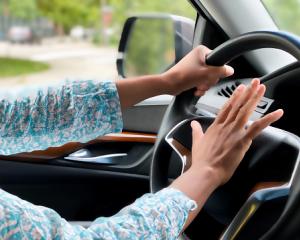Police are yet to install tracking devices in their vehicles despite the technology being used by ambulance and fire services in Dunedin for several years.
The devices provide real-time tracking technology that emergency service spokesmen say can get crews to emergencies faster and keep them safe.
When The Star asked the police if tracking technology was used in their vehicles in Dunedin and if not, why not, this newspaper was advised to make the request under the Official Information Act.
In the OIA response, police fleet management group manager Rob Morgan said no police vehicles in Dunedin had tracking technology.
"Investing in technology is under constant review and requires a degree of prioritisation.
"The fitting of GPS tracking technology is one part of that.''
Police were trialling GPS technology in 125 vehicles in the Waikato, he said.
The trial was limited to tracking and reporting the usage of vehicles - a "real-time odometer reading'' - as a fleet management tool.
No other police vehicles in New Zealand had tracking technology.
Police Association president Chris Cahill did not respond to questions from The Star asking if a lack of tracking technology in police vehicles was putting the safety of police staff at risk and affecting response times to incidents.
St John head of clinical control Doug Gallagher said the ambulance service started using real-time tracking technology in its national fleet, including in Dunedin, in 2010.
The technology was used for three primary reasons, he said:
to keep St John staff safe by giving its communications centres real-time information on the location of vehicles, if ambulance officers needed "additional assistance or backup'';
to enable ambulance dispatchers to assign the most appropriate vehicle to an incident; and to guide ambulances to the precise location of a job.
"Something that is especially useful in rural areas when it is sometimes difficult to pinpoint the precise address of an incident.''
A Fire and Emergency New Zealand spokesman said tracking technology started being installed in Fenz vehicles in urban areas in 2011.
"Most ... urban appliances in Dunedin now have it. Most rural appliances don't.''
Fenz East Otago assistant area commander Craig Geddes said the technology ensured a Fenz vehicle closest to an incident was deployed to ensure better response times.
When a Fenz vehicle arrived at an incident, the technology showed dispatchers its location, which was especially helpful if the crew were in remote areas and could not make contact by radio.
Fenz staff were expected to respond to incidents in predetermined times, he said.
"We do so, on almost 100% of occasions.''
If a response time was not met, the tracking technology stored the data and it could be reviewed during an investigation, he said.
SHAWN.MCAVINUE @thestar.co.nz












